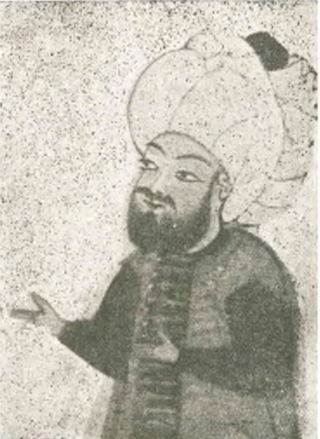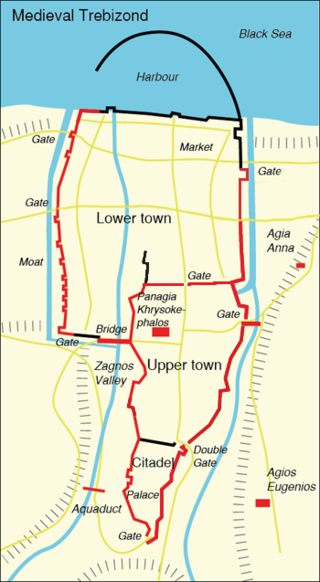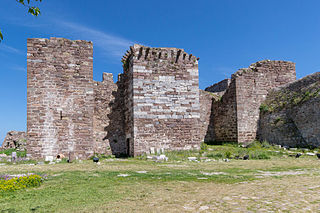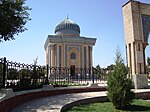Related Research Articles

Bayezid II was the sultan of the Ottoman Empire from 1481 to 1512. During his reign, Bayezid consolidated the Ottoman Empire, thwarted a Safavid rebellion and finally abdicated his throne to his son, Selim I. Bayezid evacuated Sephardi Jews from Spain after the proclamation of the Alhambra Decree and resettled them throughout Ottoman lands, especially in Salonica.

Mehmed II, commonly known as Mehmed the Conqueror, was an Ottoman sultan who ruled from August 1444 to September 1446 and then later from February 1451 to May 1481.

Murad II was the sultan of the Ottoman Empire from 1421 to 1444 and again from 1446 to 1451.

Stephen Tomašević or Stephen II was the last sovereign from the Bosnian Kotromanić dynasty, reigning as Despot of Serbia briefly in 1459 and as King of Bosnia from 1461 until 1463.

Zaganos or Zagan Pasha was an Albanian Ottoman military commander, with the titles and ranks of kapudan pasha and the highest military rank, grand vizier, during the reign of Sultan Mehmed II "the Conqueror". Originally a Christian, who was conscripted and converted through the devşirme system, he became a Muslim and rose through the ranks of the janissaries. He became one of the prominent military commanders of Mehmed II and a lala – the sultan's advisor, mentor, tutor, councillor, protector, all at once. He removed his rival, the previous Grand Vizier Çandarlı Halil Pasha the Younger, amid the fall of Constantinople. He later served as the governor of Thessaly of Macedonia.

Hüma Hatun was a consort of Ottoman Sultan Murad II and mother of Mehmed II.
Gedik Ahmed Pasha was an Ottoman statesman and admiral who served as Grand Vizier and Kapudan Pasha during the reigns of sultans Mehmed II and Bayezid II.

The Night Attack at Târgoviște was a battle fought between forces of prince Vlad III of Wallachia, and sultan Mehmed II of the Ottoman Empire on Thursday, 17 June 1462. The battle started after Mehmed, who already had tense relations with Vlad, discovered his alliance with Hungary's king Matthias Corvinus and ordered his forces to ambush him. Vlad foiled the attack and invaded Bulgaria. In response, Mehmed raised a great army with the objective to conquer Wallachia and annex it to his empire. The two leaders fought a series of skirmishes, the most notable one being the conflict where Vlad attacked the Turkish camp in the night in an attempt to kill Mehmed. The assassination attempt failed and Mehmed marched to the Wallachian capital of Târgoviște, where he found a few men with cannons. After leaving the capital, Mehmed discovered 23,844 impaled Turks whom Vlad had killed during his invasion of Bulgaria. The number is mentioned by Vlad himself in a letter to Matthias Corvinus. The sultan and his troops then sailed to Brăila and burned it to the ground before retreating to Adrianople. Both sides claimed victory in the campaign and Mehmed's forces returned home with many captured slaves, horses, and cattle.

Çandarlızade Ali Pasha was the grand vizier of the Ottoman Empire from 1387 until 1406, under sultan Bayezid I and, during the Ottoman Interregnum, Süleyman Çelebi.
Rum Mehmed Pasha was an Ottoman statesman, known for being the grand vizier of the Ottoman Empire from 1466 to 1469 and the main rival of Mahmud Pasha Angelović. As his name suggests, he was of Greek descent.

Mahmud Pasha Angelović was the Grand Vizier of the Ottoman Empire from 1456 to 1466 and from 1472 to 1474. He also wrote Persian and Turkish poems under the pseudonym Adni.
Ishak Pasha was an Ottoman general, statesman, and later Grand Vizier of Albanian or Greek origins.
Turahanoğlu Ömer Bey was an Ottoman general and governor. The son of the famed Turahan Bey, he was active chiefly in southern Greece: he fought in the Morea against both the Byzantines in the 1440s and 1450s and against the Venetians in the 1460s, while in 1456, he conquered the Latin Duchy of Athens. He also fought in Albania, north-east Italy, Wallachia and Anatolia.
Sara Khatun was an influential woman of the Aq Qoyunlu state, as the political adviser of her son, Uzun Hasan. She was a successful and well-respected diplomatic mediator.

The siege of Trebizond was the successful siege of the city of Trebizond, capital of the Empire of Trebizond, by the Ottomans under sultan Mehmed II, which ended on 15 August 1461. The siege was the culmination of a lengthy campaign on the Ottoman side, which involved co-ordinated but independent manoeuvres by a large army and navy. The Trapezuntine defenders had relied on a network of alliances, which would provide them with support and manpower when the Ottomans began their siege, but it failed at the moment that Emperor David Megas Komnenos most needed it.

Gülşah Hatun was a consort of Sultan Mehmed the Conqueror of the Ottoman Empire.
Hamza Bey was a 15th-century Ottoman admiral of Albanian origin, related to the Kastrioti family.

The Ottoman conquest of Lesbos took place in September 1462. The Ottoman Empire, under Sultan Mehmed II, laid siege to the island's capital, Mytilene. After its surrender, the other forts of the island surrendered as well. The event put an end to the semi-independent Genoese lordship that the Gattilusio family had established in the northeastern Aegean since the mid-14th century, and heralded the beginning of the First Ottoman–Venetian War in the following year.
Manuel Bochalis was an Albanian military commander in the service of the Despotate of the Morea and the Republic of Venice.
The Battle of Kljuc is a pitched battle which took place during the conquest of Bosnia in 1463.
References
- ↑ Cici 2001, p. 171.
- 1 2 Atçıl 2016, p. 66.
- 1 2 3 Babinger 1992, p. 490.
- ↑ Babinger 1992, p. 211.
- ↑ Babinger 1992, p. 222.
